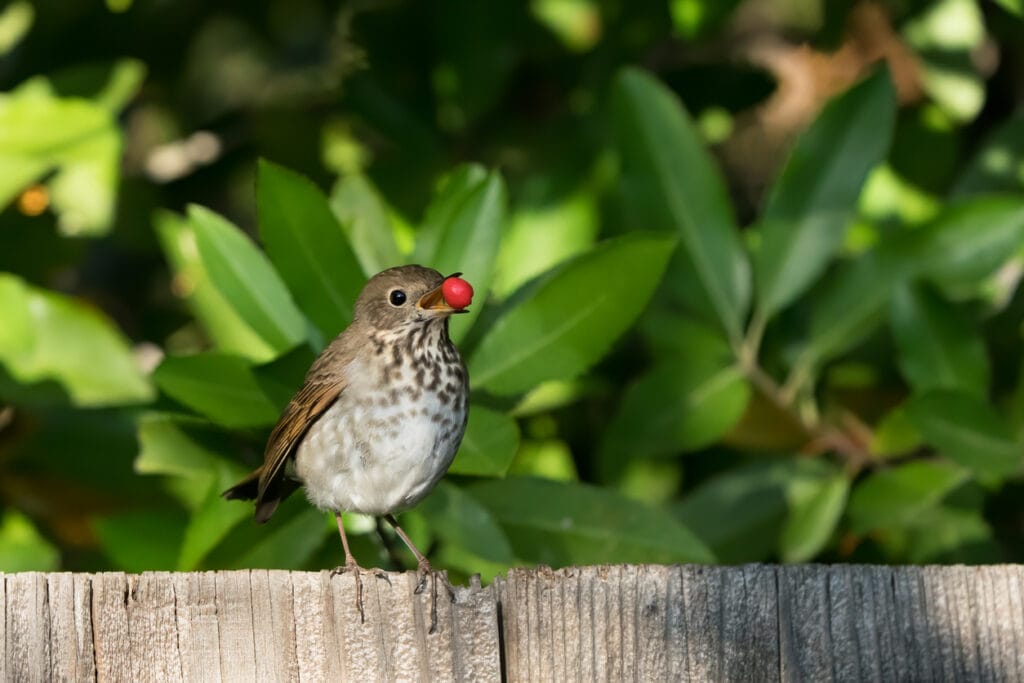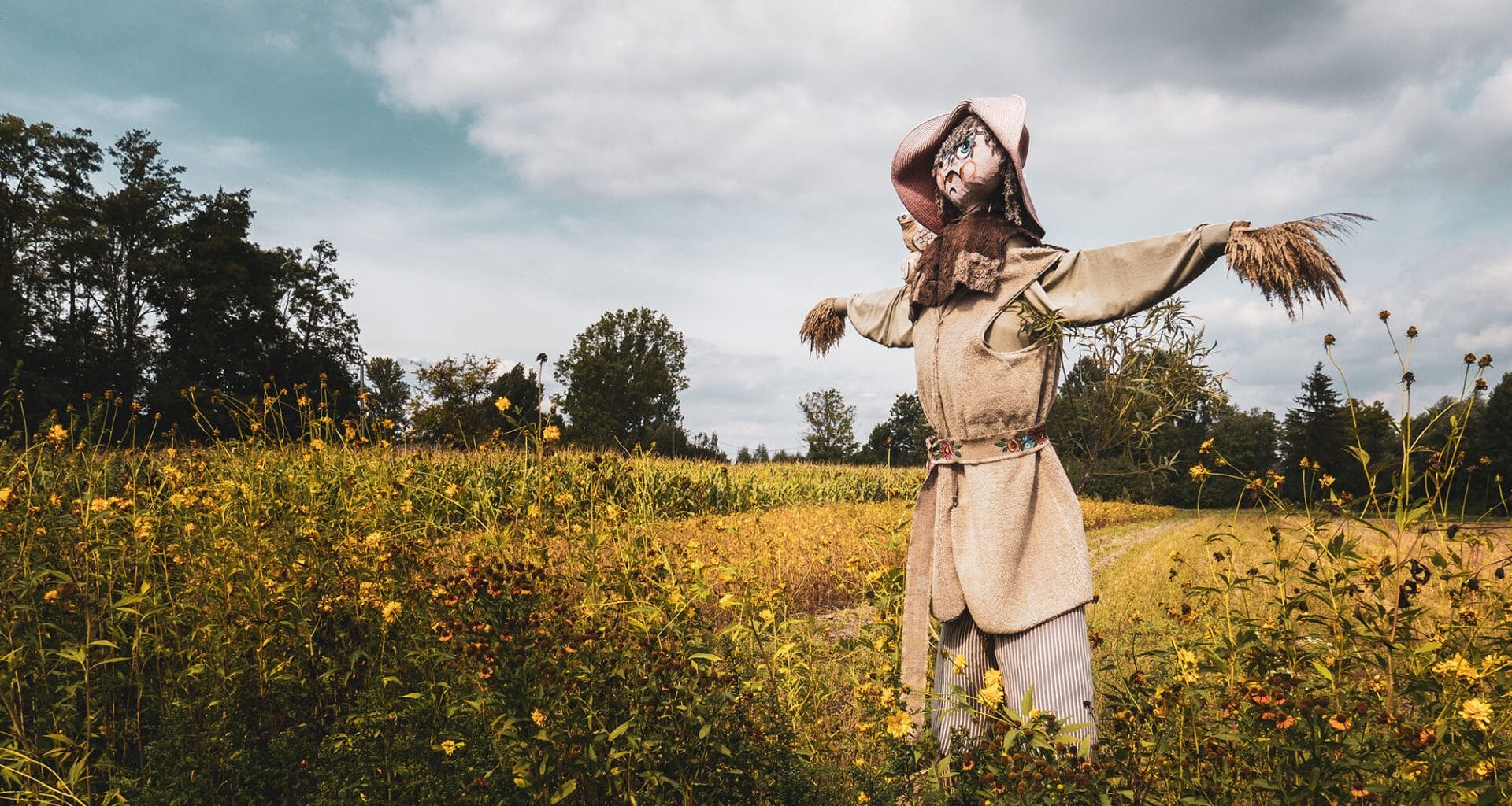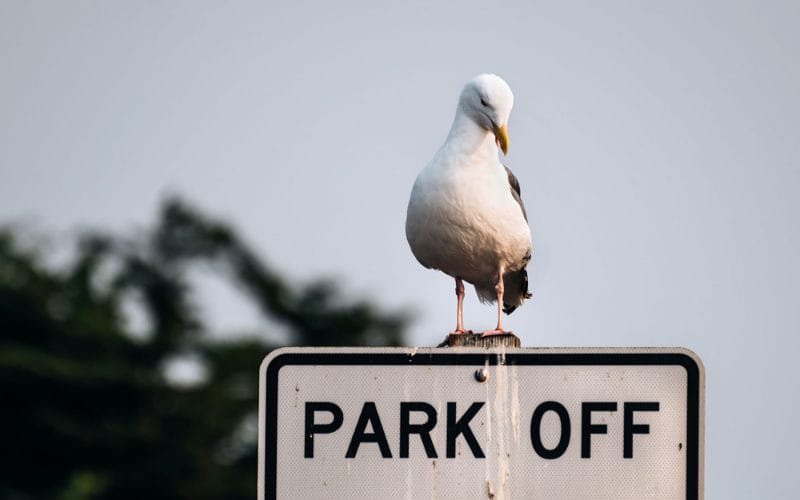There are a few ways to deter birds from around your property. One of the cheapest is bird scare tape. It’s effortless to use and can look quite festive at the right time of year. In the hands of the creative, you can use bird scare tape to brighten and decorate areas of the yard. So does bird scare tape work?
The short answer is yes, bird scare tape works with most species of birds. The bright light that reflects off the tape combined with the tape’s movement annoys and frightens birds away.
Scare tape comes in different colors and patterns and often mimics the scales of a snake. Use scare tape on branches and in other strategic locations to deter birds from specific parts of the garden.
A problem with decoys, like a rubber snake, is that birds get used to them because they don’t move. Bird scare tape can be loosely wrapped or draped along and around tree branches. Due to the wind sending ripples of movement along with it, the tape maintains its efficacy for longer.
Why Does Bird Scare Tape Work?

As mentioned, some bird scare tape impersonates the look of snake scales and has similar colors and patterns. In addition to imitation, other types of scare tape utilize reflection to their advantage. This is the main answer to does bird scare tape work.
Author Note: Birds are unable to recognize the difference between reflections and the real world. This is one of the reasons they fly into glass window panes. Another more obvious display of this is to see a territorial male bird fighting his own reflection.
The theory behind reflective tape is that there are constant moving reflections. The birds’ amazing eyesight catches glimpses of movement in the tape. These partial glimpses of themselves or other members of the flock are just enough to unsettle the birds.
When birds are eating or resting, they prefer peaceful locations. With the movement constantly catching their eye, it inhibits the birds’ ability to relax.
Reflective/Festive Tape and Ribbon
Hanging sparkly festive tape or ribbon can have a similar effect as bird scare tape. But as these products are not designed to be used outside, the elements can quickly render them useless.
The sun’s UV rays deteriorate the plastic. Coupled with temperature changes and the wind, festive reflective tape doesn’t last very long.
Fabric ribbon will last longer than plastic-based tapes, but it will still eventually fray. Water will damage fabric quickly and will also hamper the amount of movement from the wind.
Scare tape, which is designed for outdoor use, isn’t particularly long-lasting. Even when placed out of the worst of the weather, it won’t last much longer than one or two seasons.
Decoys
Rubber snakes are effective decoys, but they need to be moved every now and then. Rubber snakes provide a more localized deterrent when placed inconspicuously on a tree branch. And in such conditions, their deterrent properties have more longevity.
In the middle of a lawn, a decoy snake can be very effective at keeping pests off the grass. However, such a prominent location has its drawbacks. Birds are clever, and it will not take long for them to spot the phony.
Using a decoy such as a fake owl can be effective over an even larger area. But decoys that replicate predatory birds may work better than you hope. Birds that are preyed upon by raptors know the predators can strike from a distance.
Prominent locations work well for decoys of flying predators. But again, the deterrent effect will suffer decreased longevity unless repositioned regularly. Raptor decoys can be so effective that they can deter almost all the visitors to your bird table.
Bird Scare Tape on Windows
It is estimated that over a quarter of a million birds die every year in Europe alone from flying into windows. The number globally could well be in the millions.
You can use bird scare tape to dissuade birds from flying into windows too. Stapling tape loosely around the window frame should deter birds from flying into a window. If the birds still seem intent on kamikaze flights, a few strips in front of the pane should do the trick.
Try fixing the strands of scare tape spaced just a few inches apart. Stretch the tape loosely from the top to the bottom of the window frame. This ‘barred’ effect should present a visible barrier to the birds and prevent collisions.
Author Note: Suppose it is primarily birds of similar size to blue jays that are drawn to your windows. Space the strands four inches apart. Spacing for smaller birds like sparrows or cardinals should be 3 inches.
Hopefully, it is only for a few weeks in spring or summer that birds fly into your windows. So if you don’t like the idea of strips of tape permanently outside your windows, here is a solution.
Instead of stapling the scare tape directly to the window frame, use velcro.
Installing Bird Scare Tape on Your Window
- Measure the width of the window frame and cut two strips of velcro to length.
- Separate the two sides of the velcro.
- Glue or staple one-half of each strip to the top and bottom of the window frame.
- Divide the width of the frame (in inches) by three or four.
- This will provide the required number of scare tape strips.
- Measure the height of the window frame to ascertain the length of the scare tape.
- Cut the required number of scare tape strips two inches longer than the measured height.
- Space the strands three or four inches apart, depending on your previous calculation.
- Staple one end of the scare tape strands perpendicular to one of the velcro strips.
- Repeat this step for the other velcro strip.
The velcro with the scare tape attached can now be placed and removed as needed.
Other Window Deterrents

You can also use this method with strands of other material too. You can use lengths of monofilament fishing line instead of scare tape. This will limit the interruption to the view from your windows.
The fishing line is not nearly as visible to us humans as it is to birds. But birds may also struggle to see it until the last minute. Birds are able to see a wider spectrum of light than humans. This puts UltraViolet light in a bird’s visible spectrum.
There are brands that make a fishing line for night fishing that glows under UV light. Keeping in mind that birds can see UltraViolet. This type of fishing line might be even more visible for them than normal.
Stickers on Windows
There is an increase in visibility when a window has stickers on it. While stickers may reduce the number of bird strikes on a window, they will not completely solve the problem. People still walk into glass doors even when they have stickers on them.
Stickers can be a nice way to brighten a window with a dull view of a wall. And they do help people to see glass doors. Though they may stop people from walking into the glass, stickers will be less effective for birds.
These stickers are much less of an obstacle for small birds but may help with blue jays or crows. Hummingbirds are very small and are used to flying through dense undergrowth seeking flowers. Hummingbirds need a two-inch by two-inch grid to effectively deter them.
Invisible Ink for Bird Safety
Dr. Kolbe has developed a range of products that utilize the UV spectrum, which is visible to birds. Kolbe has developed a pen and a sticker that can be used to make window panes visible to birds.
Invisible ink uses the UV spectrum of light to remain unseen by the naked eye. This means you can use invisible ink to provide a visible barrier to birds. Because birds can see UltraViolet light, but we can’t, Dr. Kolbe’s invisible ink can be drawn or painted on windows.
Author Note: Not all types of ink can be used on glass. However, most security marker pens have a felt tip that will apply the ink to glossy surfaces. This ensures that expensive or sentimental glazed pottery and glass items can be marked.
Dr. Kolbe has also developed a film, like a sticker for windows. The film, in fact, covers the entire pane but remains invisible to the human eye. The film has silhouettes of predatory birds in UV ink. The images cover the entire film, making the whole pane a visible barrier for birds.
Dr. Kolbe has been working for many years to make glass ‘bird safe.’ The sticker film he has developed seems to be the most effective. These options are longer lasting than using invisible ink because the ink will be washed off when the windows are cleaned.
Bird Table in the Window

Another way to deter birds from flying into windows is by placing a feeding station close by. A bird feeder within two feet of a window is great for distracting flying birds. Due to a bird’s high metabolism, they have difficulty passing by an easy meal.
Birds may still crash into the window as they take off from the feeder. But crashing before they can build up speed means the birds should not come to too much harm.
Conclusion
There are many ways that you can put bird scare tape to use. Whether to deter birds from the tree above your drive, so they stop pooping on your family’s vehicles. Or to stop them from making an unsightly mess all over your chimney, bird tape can help.
Whether you want to deter birds from your yard entirely or just stop them from crashing into your windows. We hope you enjoyed this article on does bird scare tape work.
Fly high friends!
FAQ
Reflective tape can be used as a visual deterrent to scare birds away as the shiny surface is perceived as a potential threat. However, its effectiveness may vary depending on the species of bird and the specific situation.
Birds are naturally scared of reflective surfaces as it may resemble a predator’s eye or a potential physical threat. The shining and flashing of the light can also be perceived as a warning sign, causing birds to perceive the area as dangerous and avoid it.
As Hawks are daytime predators, the chances of scare tape working to scare off Hawks is high. However, its worth mentioning that the effectiveness depends on many variables such as the placement of the tape, sunlight and surrounding area.










